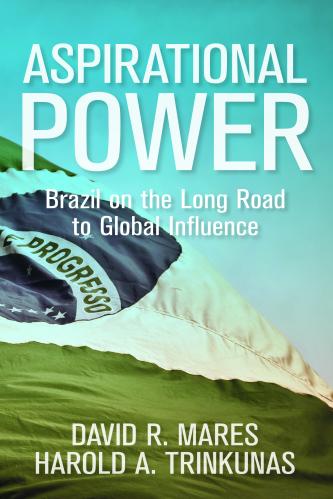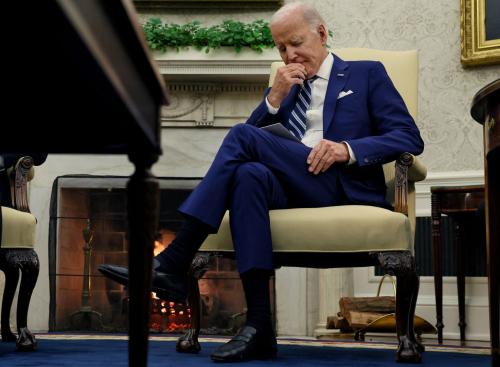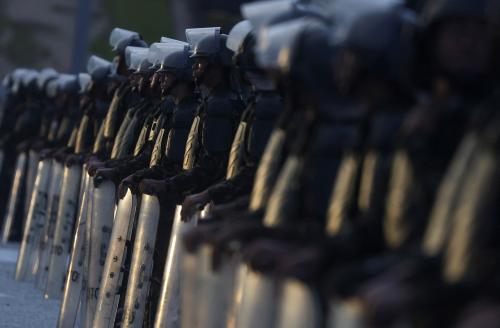What should incoming President Jair Bolsonaro do to advance his anti-crime agenda in Brazil? His tough-on-crime rhetoric has done much to catapult him to the Brazilian presidency. Yet his actual ideas for fighting crime, including giving police and army units greater prerogatives to use force and employing the army in street patrols, seem incomplete at best. Some of his proposals also imply the use of extralegal measures that could bear too much similarity to the abusive practices of President Rodrigo Duterte’s policing policies in the Philippines, to take one undesirable example.
It is true that Brazil’s crime rates are horrible, and a major shakeup in approaches to public safety is needed. It is also true that Brazil has already tried one of the key ideas recommended below, a variant of community policing, the Pacifying Police Unit (Unidade de Polícia Pacificadora, or UPP) program—though it wound up under-resourced in terms of both law enforcement and its associated economic and social programs.
Still, Bolsonaro would do well to bear in mind principles that have been learned in creating successful strategies to fight crime around the world. Several are highlighted in a 2017 study, “Securing global cities: Best practices, innovation, and the path ahead,” that I co-authored with former U.S. Army Chief of Staff and Iraq commander General Raymond Odierno. Below, in short, are the core findings of our research, which examined a range of major challenges to the world’s cities, including “normal crime,” transnational criminal organizations and drug cartels, terrorism, and massive disasters. Not all the principles are equally relevant to Brazil’s core problems today, but it is still useful to summarize all of them in case the situation evolves. It is also worth emphasizing that the general concept of community policing must be adapted to the circumstances of a given country; in Brazil, this will admittedly be a challenge, yet it is important not to give up, or to think there is an easier way.
CONTINUE TO REFINE COMMUNITY POLICING
Community policing is foundational in the urban security enterprise. It has helped drive major reductions in crime rates not only in many U.S. cities, but also in other countries from Latin America to Europe and beyond. It is also crucial in the fight against transnational crime and terrorism, largely for the intelligence it can provide when communities feel engaged in helping ensure their own safety. The concept includes methods such as: decentralized organization of police with delegation of authority; stable assignments of officers in certain beats and neighborhoods, to foster relationships and communications; an emphasis on crime prevention rather than response (for example, patrolling more heavily in places and at times when crime is otherwise most likely to occur); analytics designed to identify and highlight patterns of crime, allowing for targeted strategies at the local level to address high-risk areas; and encouragement of assistance from the broader community—including local businesses—in identifying dangers as well as solutions to crime. Other simple tactical innovations have helped too, such as enhancing confidence and safety in public places like parks. Close cooperation between police and prosecutors is also important for ensuring that the latter are invested in cases, and that the former understand what kinds of evidence will hold up in court. Finally, sentencing as well as prison conditions need to be designed with the goal of lowering future crime rates. Ultimately, community policing and related activities need to shore up the rule of law and citizen security as preeminent concerns.
BREAK DOWN STOVEPIPES
Collaboration is needed to share intelligence and to address cross-jurisdictional threats, particularly for the purposes of stopping terrorism, but also for taking on organized crime and transnational criminal networks. Police forces need to work closely with national-level intelligence or security agencies, like MI5 in the United Kingdom and the FBI and CIA in the United States. This means, for example, determining which agencies take the lead on surveillance and on arrests, which are responsible for tracking any given suspect, how to obtain security clearances for some police officers, and how regular beat-patrol policemen can help provide information about suspected terrorists through their normal jobs, even without extensive specialized training. Information sharing also requires compatible and secure cyber systems across different agencies—necessarily imposing further demands on resource requirements for the public safety mission. In a number of countries, a recent history of terrorist attacks has motivated authorities to cut through bureaucratic resistance and demand cooperation in these ways. Sometimes, however, authorities have acted even in the absence of a major catastrophic experience, though this takes decisiveness and foresight, and excellent leadership. Either way, once established, collaborative mechanisms and patterns of behavior need to be institutionalized and perpetuated.
ESTABLISH CLEAR STRATEGIES AGAINST ORGANIZED CRIME
In dealing with narcotics traffickers and other sophisticated, often transnational, criminal organizations, priorities are needed to sustainably reduce violence. Authorities can preferentially target those gangs, groups, or organizations that are the most violent. This latter tactic can weaken the worst of the worst, while also deterring the excessive use of violence by other organizations. Another key choice in attacking criminal networks and terrorist organizations is whether to target just the top leadership of these organizations, or instead to develop a more patient strategy emphasizing action against mid-level operatives. Evidence suggests that the latter approach is usually more effective. There can be times when removing one key leader makes a big difference (arguably this was true for Pablo Escobar in Colombia, the Shining Path movement in Peru, and to some extent al-Qaida). But it is generally important to extend targeting down a layer or two in an organization.
EXPLOIT NEW OPPORTUNITIES FROM TECHNOLOGY
Technology can aid criminals in protecting the content of their communications from authorities. Technology also creates new vulnerabilities, notably in the cyber realm. But it offers great advantages to police forces and other security organizations too. Helpful technologies include inexpensive closed-circuit TV, facial recognition technology, license-plate readers, smart phones and GPS trackers for police cars, acoustic gunshot detection systems and other advanced sensors, and unmanned aerial vehicles. Yet where technology has been effectively deployed, it has not been at the expense of officers on patrol. We found no examples of cities that were successful in fighting crime and terrorism unless they simultaneously maintained or increased police personnel and focused intensively on the quality and training of those personnel.
PROMOTE SOCIAL COHESION
To gain support from communities and address the root causes of crime and terrorism, authorities must promote social cohesion as a central element—not an afterthought—of the urban security effort. The neighborhoods and demographic groups most affected by crime and violence must be treated as essential allies. Moreover, education and employment opportunities must be expanded in urban areas suffering from lack of opportunity and hope in order to address the root causes of crime. Our research has uncovered several creative ideas—for example, using fire departments or national army outreach efforts in places where police departments may not be easily trusted, and engaging formerly incarcerated individuals or rehabilitated former members of violent gangs or groups to reach out to disenfranchised communities. The private sector can make inclusion a priority in hiring and retention policies. Public-private partnerships can also help steer private funds and energies to programs that promote inclusion.
PREPARE FOR “BLACK SWAN” EVENTS
Beyond dealing with omnipresent threats, it is crucial to be as ready as possible for one-time catastrophes. Most cities may never experience truly horrific events, but it is important not to take solace in such probabilities, and to prepare for disasters before they occur. Those catastrophes could be purely natural. They could also become complex emergencies that superimpose themselves upon, or help to create, violent or anarchic security conditions. They could take place in cities already suffering significant violence; they could also produce shocks that create a breakdown in order. Given the growth of megacities, they could also easily affect 10 times as many people in a single incident as have been directly threatened by the world’s 21st century natural catastrophes to date. The private sector can have a role here too—as in Manila in the Philippines, where a consortium of utilities and other companies has organized to help authorities in emergencies, with a single point of contact and clear coordination channels.
ENHANCE PUBLIC-PRIVATE PARTNERSHIPS
This theme is so central to our findings that it is interwoven throughout all six of the above principles, and hard to separate out from any of them. The “Securing Global Cities” paper attests to many examples of where it is working already—and argues strongly for expanding such efforts in the future. The importance of public-private collaboration bears emphasis in any summary of the core principles of the urban security enterprise.
President-elect Bolsonaro has been a divisive figure in Brazilian politics, but as he begins his presidency, he will have an opportunity to help unify the country if he can deliver on his promise to take on crime. That is an important priority for Brazil, to be sure, but it is also a daunting challenge. To be successful, he will need to emulate and implement best practices from around the world. Fortunately, many ideas and approaches have by now been tried in enough different places and settings that we are beginning to know a lot more about what works. I hope Bolsonaro will take the time to study and to learn.






Commentary
How Brazil’s Bolsonaro can apply global lessons learned in fighting crime
November 13, 2018